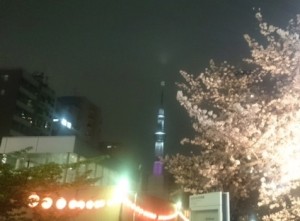The architecture of historical Japanese buildings, including temples, shrines, and residential houses, is pact with centuries worth of knowledge. From finding the most durable materials to figuring out a design that would last for hundreds of years, generations of architects and carpenters have established and developed an outstanding architectural field. Their knowledge of architecture and diligence towards constructing is still seen in Japan today, and has led to the creation of many significant and symbolic buildings.
One of the most famous and recent creations is the Tokyo Sky Tree. This radio tower, which was completed in May, 2012, is 634 meters tall. It is located in Sumida-Ward, an area in Tokyo with hundreds of office buildings, skyscrapers, and apartments. The sight from the 360° viewing platform is exceptional, as you can look out over the whole city of Tokyo. If you are afraid of heights, visiting Tokyo Tower (333 meters) may be a better option. For a country that sits on four tectonic plates and has a high possibility of earthquakes, having a tall tower in the middle of the city may seem like a bad idea. However, Tokyo Sky Tree is guaranteed never to collapse even during a large earthquake. This is because the tower has adopted clever Japanese architecture.
Gojyu-no-tou, the Five-Storied Pagoda, is a historical type of building within the premises of temples. Compared to the two story temples, the five-story pagodas have become renowned landmarks because of their height. They have been built from the 10th century, and many have remained since then. Despite the number of earthquakes the pagodas have experienced, they have not crumbled. The shin-bashira, a vertical core pillar in the middle of the building, is the key to their ability to resist all earthquakes. Its system is extremely complicated, but in a nutshell, the pillar balances out the weight of the building in the case of a natural hazard. Sky Tree incorporated this shin-bashira, making the tower robust and unaffected by earthquakes. The state-of-the-art radio tower is a creation of both advanced technology of today, and conventional Japanese architectural knowledge. Architects of today have been able to provide Japan with safe and durable buildings thanks to the combination of history, traditions, knowledge, and modern technology.


Get Social